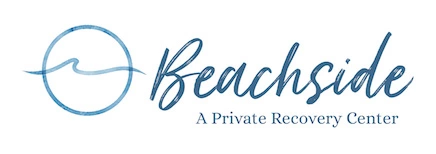
Addiction recovery and healing requires not only physical strength, but mental and emotional resiliency as well. Practicing mindfulness — trying to stay fully present in the moment — throughout your daily life can be one of the best ways for maintaining long-term sobriety. Developing a toolbox of mindfulness strategies and skills can help you better manage cravings, reduce stress, and build emotional stability and wellness, easing the ups and downs of life without relapsing.
Here, we’ll explore five techniques that can be employed for practicing mindfulness and preventing relapse to help support you on your recovery journey and help you maintain long-term sobriety.
1. Mindful Breathing
During moments of cravings, anxiety, or emotional distress, controlled breathing can help to calm your nerves, regulate emotions, and create time and space between how you are feeling and what’s happening in the present. Mindful breathing can help when your body activates it’s fight-or-flight mode, signaling the brain that there is no immediate threat. Here are some techniques for mindful breathing that can be incorporated into your daily life:
Box Breathing: Imagine a box or square in your mind. Inhale deeply for four seconds, tracing the side of the square with your breathing, then hold your breath for four seconds. Next, exhale slowly through your mouth for four seconds, and hold your breath for another four seconds, finishing the square. Repeat as needed.
4-7-8 Breathing: This technique can be most helpful for deep relaxation before sleep or in times of emotional distress. Inhale deeply through your nose for four seconds, hold your breath for seven seconds, then slowly exhale through your mouth for eight seconds.
2. Meditation for Awareness
Practicing meditation regularly can help you to observe your cravings and emotions without reacting impulsively. While there are many different types of meditation for mindfulness, here are two easy techniques you can practice daily to help you on the path to recovery:
Words of Affirmation: Take some time to be kind to yourself throughout the day by showing self-compassion. Close your eyes and take a few deep breaths, then repeat a few words of affirmation to yourself, such as “I am strong in my recovery” or “May I find peace and healing.” Focus on yourself and your journey by replacing self-criticism with self-compassion.
Urge Surfing: When cravings arise, imagine them like waves, building, peaking, then eventually fading. Notice how your body feels when the craving is strongest, and, instead of reacting, breathe through it and remind yourself that these feelings are temporary.
3. Grounding to Stay Present
Incorporating grounding techniques can help you to stay present in the moment, especially during times of stress, anchoring you in the “here and now.” Here are some techniques for grounding in the day-to-day:
5-4-3-2-1 Method: Observe your surroundings and try to identify five things you can see, four things you can touch, three things you can hear, two things you can smell, and one thing you can taste. This can help you shift your focus to your external surroundings and regain your sense of control.
Object Grounding: Carry a small object, such as a piece of jewelry or a stress toy, and focus on the texture, size, and shape of the object. This technique can help ground you and bring your attention back to the present.
4. Journaling for Self-Reflection
Journaling is a powerful tool that can aid in addiction recovery to help you process your emotions, track your progress, and identify your triggers. By engaging in journaling regularly, you can gain deeper insight into your recovery journey in a safe and secure emotional outlet. There are various types of topics you can journal about, such as keeping a gratitude journal to shift our focus on the positive in your life, or a cravings journal to help identify patterns of triggers or coping strategies.
5. Mindful Movements
Mindful movements can help you to reconnect with your body, release stress, and promote internal balance by emphasizing awareness, presence, and self-care. Here are some types of mindful movements you can incorporate into your recovery:
Mindful Walking: Try taking a walk around the same time each day and focus on the sensations of each step, your breathing, and the environment around you. Take notice of the synchronicity of your walking with your breathing and focus on your movements rather than your destination.
Body Scanning: Sit or lie down in a comfortable position, then slowly tense and relax different muscle groups, starting at your toes and working your way up to your head. Focus on each movement and relaxing your entire body. This technique can help create a sense of calm and release physical tension.
Remember, recovery is not just about abstaining from your addictions, it’s also about learning to navigate your life with self-awareness, acceptance, and inner peace. Mindfulness techniques can help you to create a foundation of non-judgmental awareness in your thoughts and emotions, but it’s a skill that takes time and practice. Start small with some of these techniques for mindfulness to create a more stable and empowered path for your journey to recovery.
Your journey toward recovery and sobriety begins at Beachside Rehab in West Palm Beach, Florida. We offer comprehensive, holistic inpatient and outpatient detox and drug and alcohol rehab. Call 866-349-1770 to speak with one of our trained admissions counselors.
